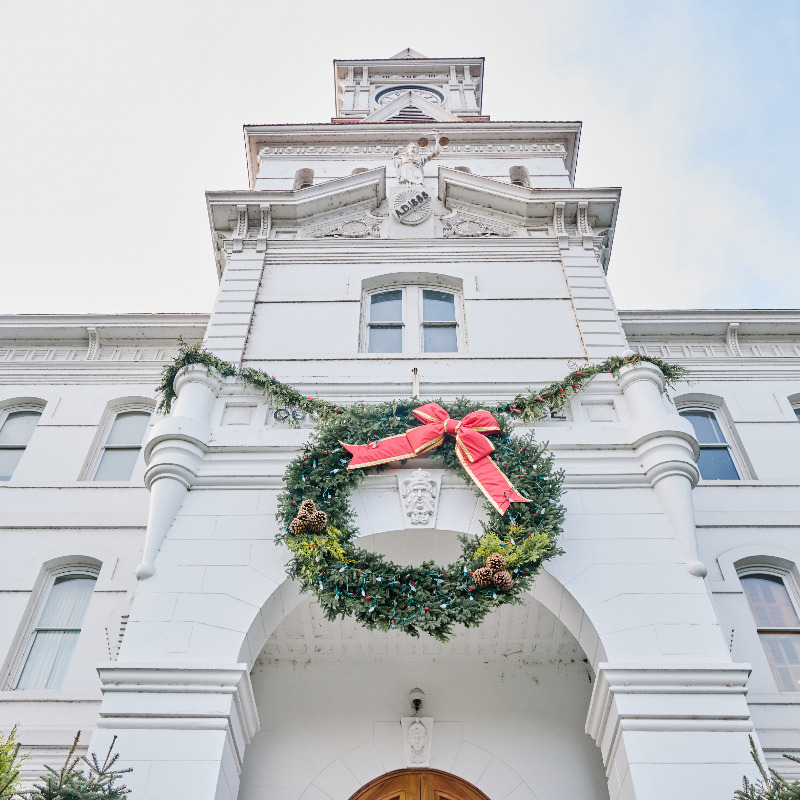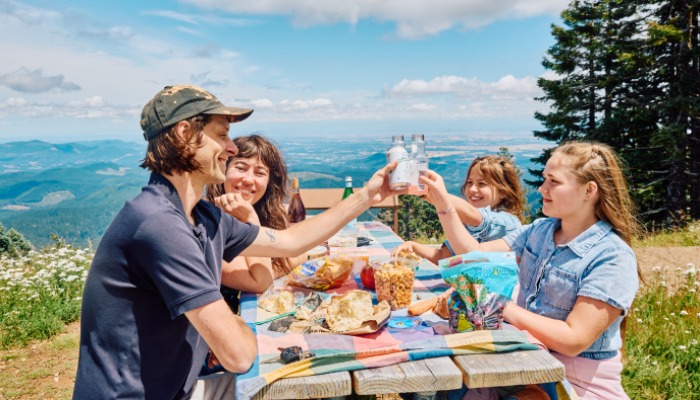Hunt for Hedgehog Mushrooms, Candy Caps & More in Corvallis During the Winter
The typical hunter-gatherer types think of picking mushrooms primarily as a spring and fall activity. However, if you learn enough of the edible varieties, habitats they grow in, and the longevity of their seasons, you can easily make this pastime last all year.
Winter is one of my favorite times of the year for mushroom hunting. While the gold rush for fall chanterelles is probably the most popular among mushroom hunters, they tend to disappear once the rains and freezing weather put an end to the harvest. Mushroom hunting during the winter months also reduces conflict with most hunting seasons, particularly in regards to big game. Best of all, it's a great excuse to get outside when the river is blown out and the weather isn't cooperating for winter steelhead, or you've already bagged your limit of ducks in the morning.
 Wood Hedgehog or Hedgehog mushroom, Hydnum repandum, Wikipedia, Holger Krisp (CC BY 3.0)
Wood Hedgehog or Hedgehog mushroom, Hydnum repandum, Wikipedia, Holger Krisp (CC BY 3.0)
The progression of different species that fruit during this seasonal transition begins with Hydnum repandum, commonly known as hedgehog mushrooms, which are very similar in density, texture, and taste to chanterelles. Some species of hedgehog mushrooms begin fruiting in late summer and early fall, but there are others that will continue to fruit long after chanterelles have gone past their prime. Hedgehog mushrooms get their name from a unique spiky pattern of spines beneath their caps where you typically see gills on most mushrooms. Their lack of imposters also makes them a fairly easy mushroom to identify and distinguish as an edible. These are a great choice for savory dishes, mushroom soups, or even pickling, and will maintain their density and texture fairly well after cooking.
 Candy Cap, Lactarius rubidus, Wikipedia, Nathan Wilson (CC BY-SA 3.0)
Candy Cap, Lactarius rubidus, Wikipedia, Nathan Wilson (CC BY-SA 3.0)
As the season transitions into colder, freezing temperatures that are inhabitable for most fall mushroom species, another prolific and unique mushroom is the Lactarius, more commonly known as "Candy Cap" for its strong maple syrup aroma. There are three North American species of Lactarius, but the Lactarius Rubidus is more common on the west side. This particular mushroom requires a little more advanced identification, as it resembles a large pool of lookalikes known by the mycological community as "LBMs" or "Little Brown Mushrooms." The Galerina is one toxic lookalike that grows in the same habitat. It's recommended to gather Candy Caps by hand rather than with a knife. The texture of their stem (known as a "stipe") is fairly fragile and breaks more like an old, dry twig, while it's imposters have a stipe that is more flexible, and tends to bend and break more like a green willow branch. Another analogy to explain this would be the difference between bone and cartilage.
Candy Caps are pretty unique in their range of culinary applications, and are typically dried first and ground into powder. Drying them is recommended at very low temperatures in order to best preserve the flavor and aroma. Once they're dried, use a coffee grinder to turn them into a fine powder. The powder you can use in almost anything sweet, but some of the more common uses are adding it to homemade ice cream, pancakes, cookies, muffins, or other baked goods. The maple syrup flavor and aroma becomes a dominating focus of whatever you choose to add it to, so remember that a little bit goes a long way.
 Yellowfoot or Winter Chanterelle, Craterellus tubaeformis, Wikipedia, Jorg Hempel (CC BY-SA 3.0 DE)
Yellowfoot or Winter Chanterelle, Craterellus tubaeformis, Wikipedia, Jorg Hempel (CC BY-SA 3.0 DE)
Finally, one of my personal favorite mushrooms of this season is Craterellus tubaeformis, aka the yellowfoot, or winter chanterelle. They have a very similar gill structure like the unique key identifiers for all chanterelles, which are gills that fork or web rather than running parallel to each other, and have erratic termination points where the gills connect to the stipe. The top of the mushroom is almost brown, with a dimple in the center of the cap. The name for yellowfoot comes from the stipe, which is a subtle, earthy, golden color. Unlike the golden chanterelles, the stipe on a yellowfoot is hollow.
Yellowfoot lends itself as an easy to forage forest product, growing in small clusters and often prolific within a small area. Whereas it's gold and white cousins typically push up from the duff and come covered in pine needles and debris, yellowfoot tends to grow from the same habitat, only from the surface of the forest floor rather than just beneath the first layer of it. Much like the candy caps, you won't need a knife to harvest them, you can simply pluck them by bending them at their base until they snap. In spite of the fact that yellowfoot are hollow-stemmed and significantly smaller and less dense than their chanterelle cousins, the process of harvesting them involves a lot less cleaning and is very low maintenance. Their size doesn't require any slicing or cooking prep, so with enough care harvesting them in the field, you can simply bring them home and toss them in a skillet, or add them to your favorite savory dish.
You can find all these species in the same places you would find golden chanterelles in the fall. Anywhere in the lower elevations surrounding Marys Peak is a good place to start. Don't let rain and snow discourage you - the precipitation and snow melt will activate growth from the forest floor, especially after it's been a bit crispy during the fall.
👉 Protip: If you need a little guidance, try starting with the Corvallis Mushroom Hunting & Identification Facebook group.
The diversity of species available to pick during the winter months offers a wide range of uses in a variety of meals. The versatility of their culinary value will not only expand your palate, but with very little effort, you can easily stock up on side dishes for your winter meals, and enjoy a little more time in the outdoors, rain or shine.
Article by Randall Bonner. Photos via Wikipedia. Keep up with Corvallis news, events and happenings by signing up for our email newsletter.














